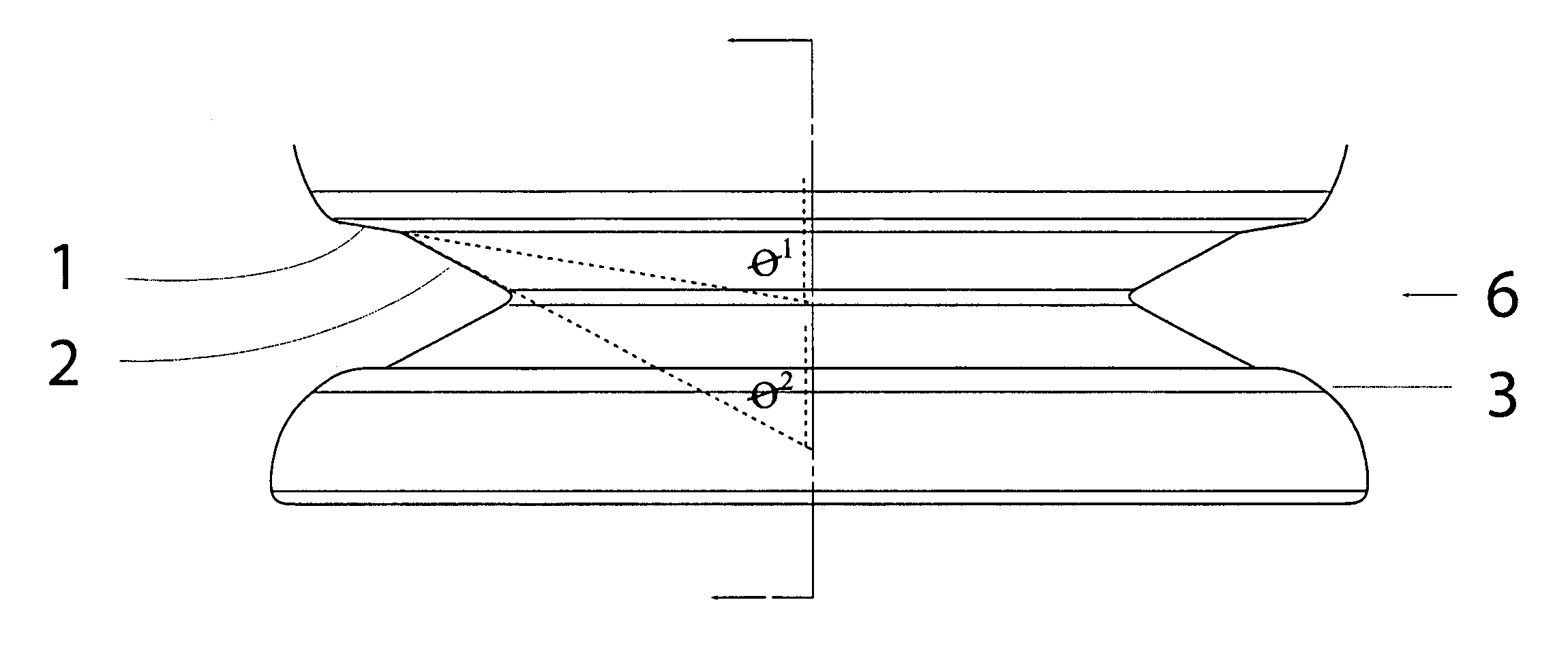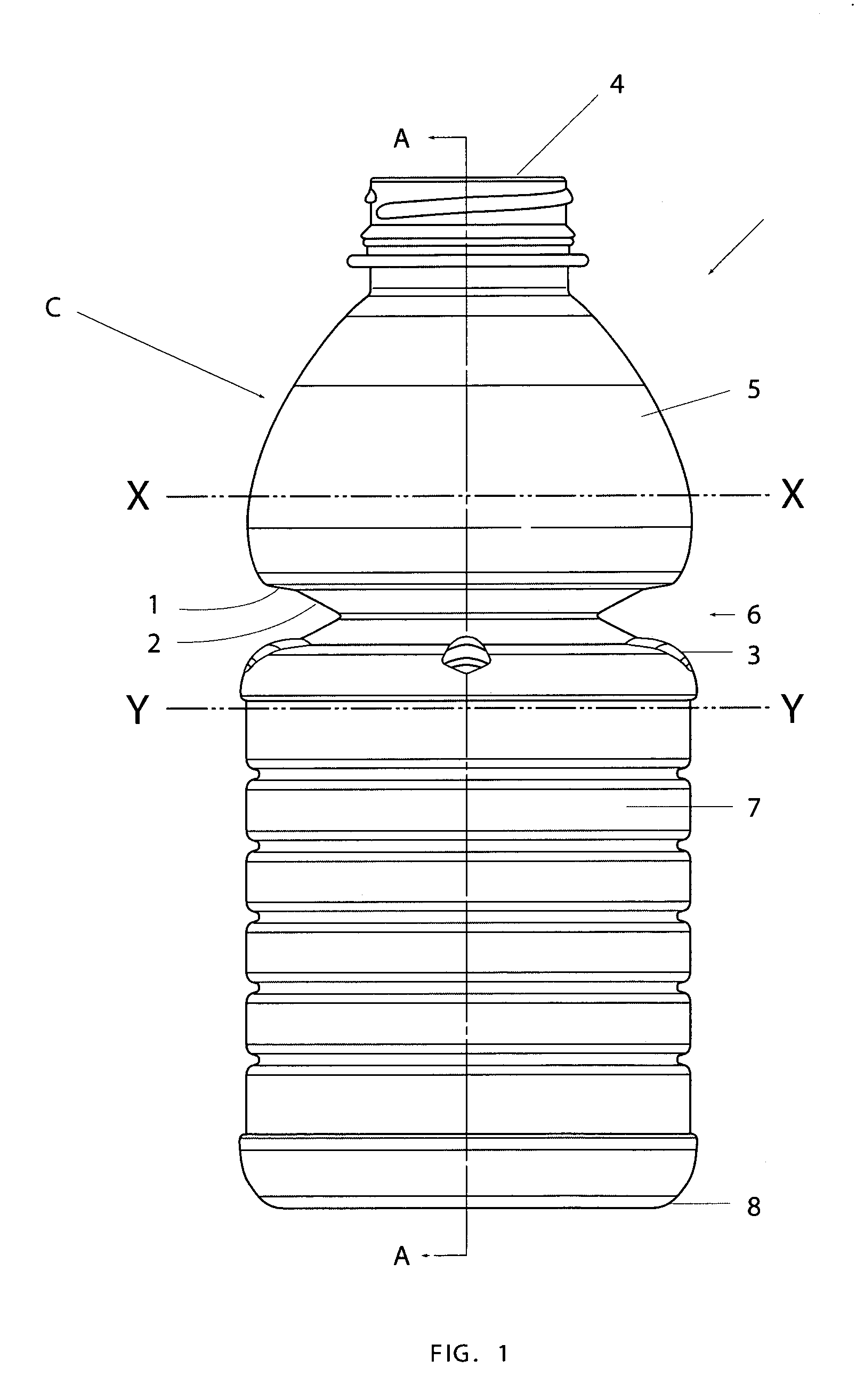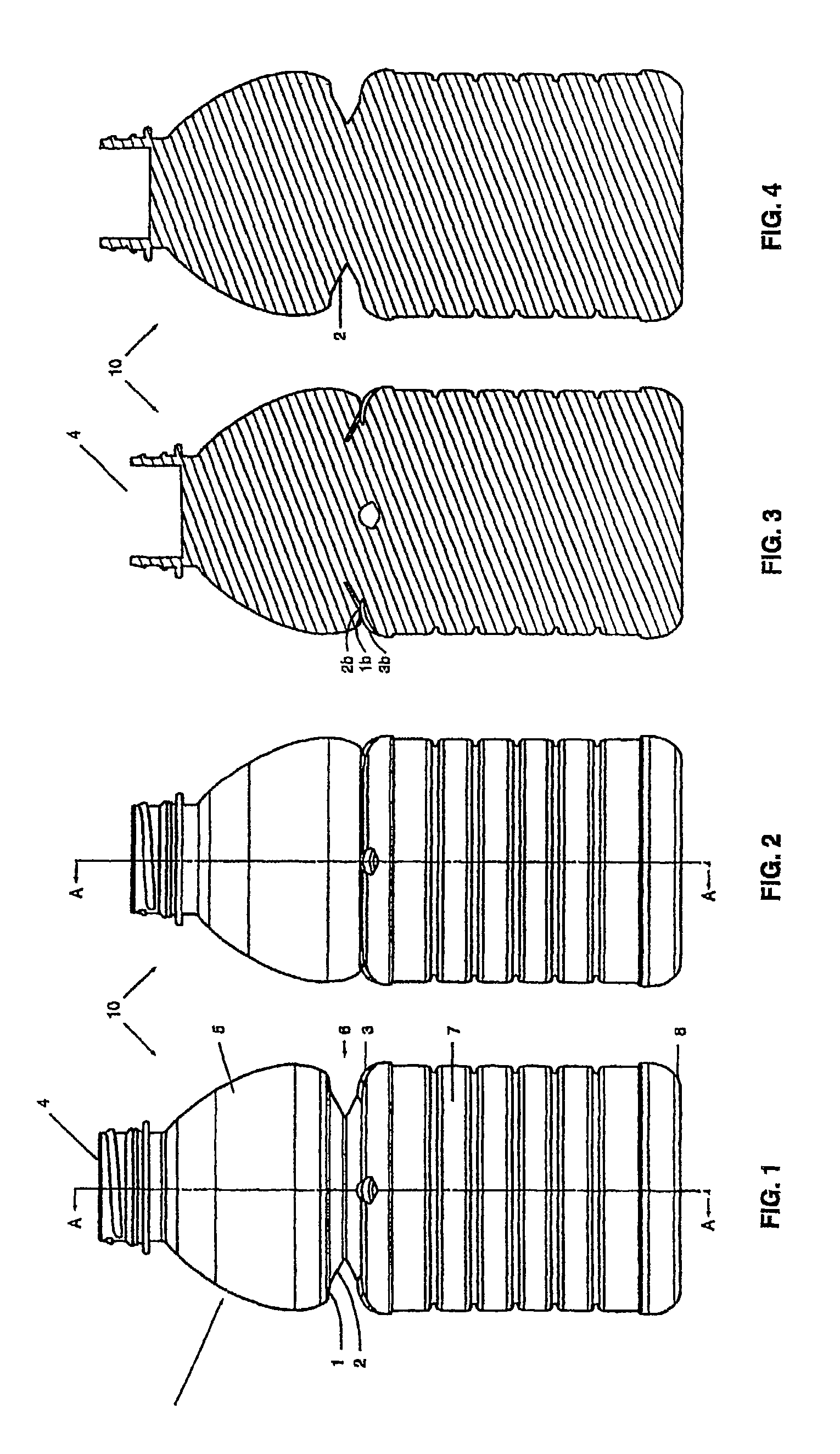Semi-rigid collapsible container
a container and semi-rigid technology, applied in the field of polypropylene containers, can solve the problems of limited vertically disposed flex panels, failure under any increased load, and inability to meet the vacuum pressure of containers, and achieve the effect of efficient compensating for vacuum pressure in containers
- Summary
- Abstract
- Description
- Claims
- Application Information
AI Technical Summary
Benefits of technology
Problems solved by technology
Method used
Image
Examples
Embodiment Construction
[0026]The present invention relates to collapsible semi-rigid containers having a side-wall with at least one substantially vertically folding vacuum panel section which compensates for vacuum pressure within the container.
[0027]Preferably in one embodiment the flexing may be inwardly, from an applied mechanical force. By calculating the amount of volume reduction that is required to negate the effects of vacuum pressure that would normally occur when the hot liquid cools inside the container, a vertically folding portion can be configured to allow completely for this volume reduction within itself. By mechanically folding the portion down after hot filling, there is complete removal of any vacuum force generated inside the container during liquid cooling. As there is no resulting vacuum pressure remaining inside the cooled container, there is little or no force generated against the sidewall, causing less stress to be applied to the container sidewalls than in prior art.
[0028]Furth...
PUM
| Property | Measurement | Unit |
|---|---|---|
| mechanical force | aaaaa | aaaaa |
| internal pressure | aaaaa | aaaaa |
| pressure | aaaaa | aaaaa |
Abstract
Description
Claims
Application Information
 Login to View More
Login to View More - R&D
- Intellectual Property
- Life Sciences
- Materials
- Tech Scout
- Unparalleled Data Quality
- Higher Quality Content
- 60% Fewer Hallucinations
Browse by: Latest US Patents, China's latest patents, Technical Efficacy Thesaurus, Application Domain, Technology Topic, Popular Technical Reports.
© 2025 PatSnap. All rights reserved.Legal|Privacy policy|Modern Slavery Act Transparency Statement|Sitemap|About US| Contact US: help@patsnap.com



